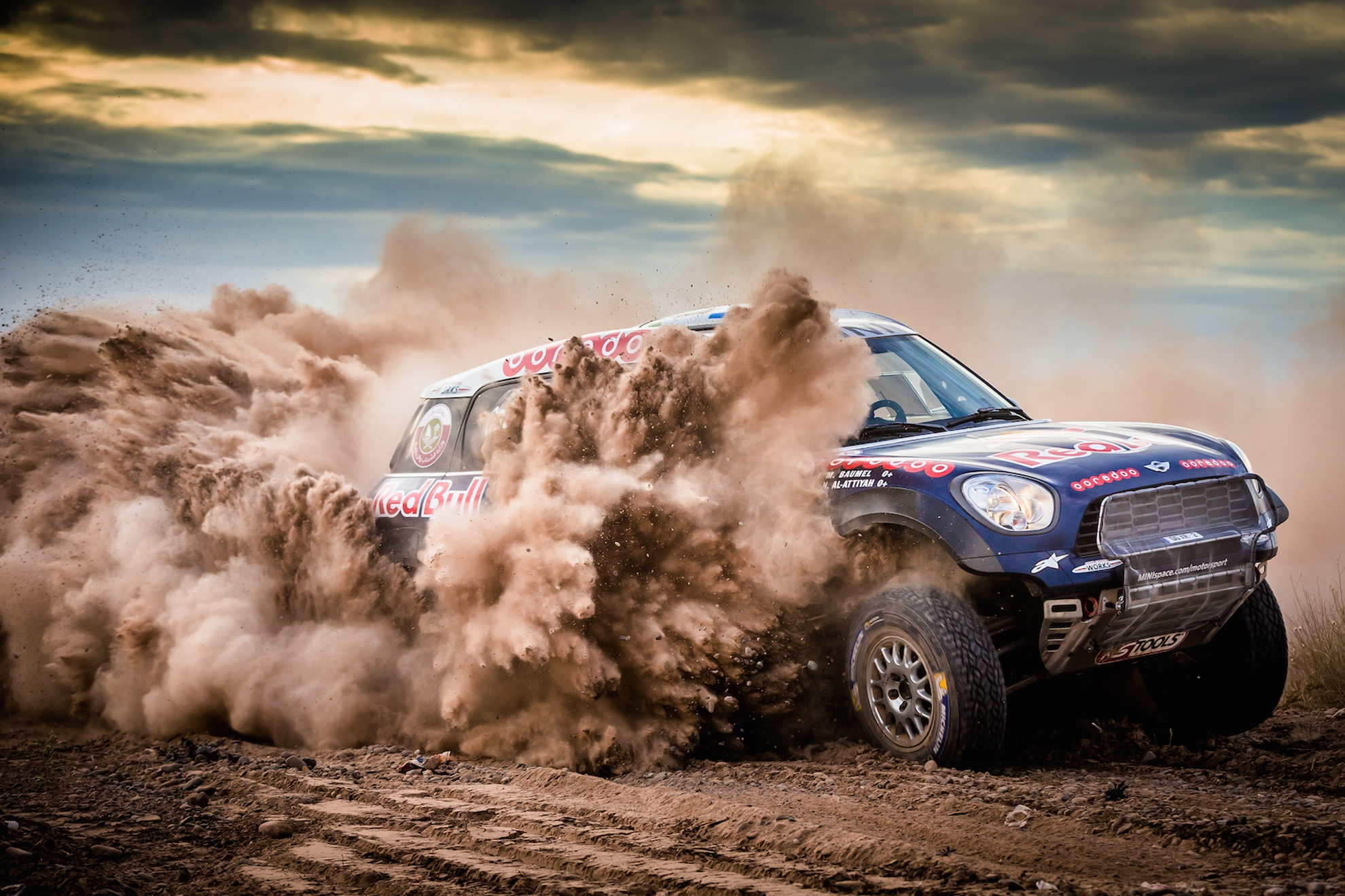 The Dakar rally is an interesting beast. The format is similar to a shorter, more traditional stage rally, but it’s spread out over two weeks and the distance is far longer than any conventional stage rally. This years route is 6,000 miles for cars, bikes and quads while the big trucks have a route of about 5,000 miles. For all classes, about half the distance is non-competitive transit stages and the rest are full-on special stages.
The Dakar rally is an interesting beast. The format is similar to a shorter, more traditional stage rally, but it’s spread out over two weeks and the distance is far longer than any conventional stage rally. This years route is 6,000 miles for cars, bikes and quads while the big trucks have a route of about 5,000 miles. For all classes, about half the distance is non-competitive transit stages and the rest are full-on special stages.
One interesting addition to this year’s Dakar is a Marathon Stage. The stage will cover two days, and there’s no service allowed. The competitors will have a bivouac location to stop for the night. From the official Dakar website:
Split over two days, a marathon stage involves some of the competitors spending the night in an isolated bivouac. The vehicles are taken into a closed area, where only help between competitors is authorised. Despite the technical challenge which this constraint represents, the drivers also enjoy a different, highly convivial atmosphere. In Uyuni, it will be the car teams which will spend a night apart, followed by the motorcyclists and quad bikers the next day. The truck category will have its own dedicated bivouac in the middle of the Atacama Desert.
Two days driving/riding in some of the most inhospitable terrain on the planet with nothing but is in or on your vehicle creates a substantial challenge. It’s one thing to use only what you can carry at an off-road park where you can hike to get help or a tow. It’s another matter when you’re in the mountains of South America!

NBCSN is airing produced daily highlight shows each day. As of yet, I haven’t seen any of them and I’ve neglected to set my DVR to record until today. I haven’t really missed them, as work has kept me locked to my computer where I’ve been able to loosely follow what’s happening live, mostly through timing and scoring.
As I compose this, we’re four days into the thirteen day event, and there’s already been a lot of action, especially in the Car class. Perennial slap-fight opponents (and former teammates at Dakar) Robby Gordon and Nasser Al-Attiya were both fast on Day 1, but Al-Attiya was penalized after the stage for speeding of all things! There are speed limits on the transit stages, and Nasser was a little too judicious with the loud pedal, I guess.
Last year’s winner, Nani Roma finished the first day, but only barely. A mechanical issue caused him to need a tow to the second checkpoint, where he limped his Mini to the finish over six hours behind the leader. Not the be outdone by others’ misfortune, Robby Gordon suffered brake overheating problems on Day 2, which put him over four hours behind.
Such is Dakar, though. It’s one of those events where simply finishing is an achievement. There’s no way to describe how difficult this race is on the equipment, the drivers bodies and minds, and even the support crews. If you’re a fan of Top Gear (who isn’t?), you’ve seen Clarkson and May sipping gin and tonic while bounding across ice flows north of the Arctic circle in a tricked-out Toyota HiLux (Tacoma for we Americans). Dakar is not that, by any stretch of the imagination.
Dakar is so brutal, it claims lives nearly every year. Over the years, some sixty lives have been lost, some competitors, some support crews and spectators. This year is no different, sadly. Michal Hernik, 39, from Poland, died on Day 3, about 200km from the special stage. As of this writing, the cause of death is unknown, and he showed no signs of a crash. Our thoughts and prayers go out to Hernik’s family, friends and team.
While it offers no consolation, the special stage for the bikes was shortened, as it was deemed too difficult, even for the elite riders. Since some riders reached the finish and many did not, the organizers chose to apply a fixed time for the riders that did not complete the stage because of the difficulty. It does rub me wrong to think that the riders can whine to officials, “It’s too hard!” and get the special stage shortened, but I can imagine if the elitest of the elite are saying it’s too hard, it must be positively brutal.
Four days in, and the 2015 Dakar is pretty much par for the course, fatality included. I was going to post overall standings for Day 4, but at 6:00pm central, the stage isn’t complete. And with the kerfuffle on Day 3 for the bikes, standings are pretty jacked up on Dakar’s website. To give you an example of how good the competition is, the top three in the car class are all different manufacturers (Mini, Toyota and Peugot) with 31 seconds covering them. You can’t ask for better racing than that!





Check trackingdakar.nl, it’s timing is more easier to follow than the official site.